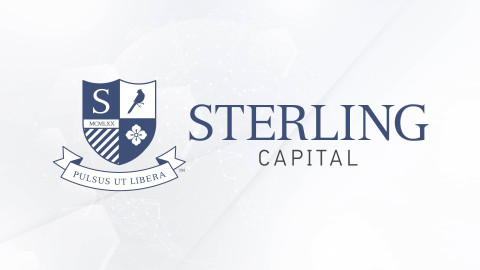Overview
C
Shares
BWVCX
Inception
Date
02.01.2012
Investment
Min.
$1,000
Subsequent
Investment Min.1
N/A
Max. Up Front
Sales Charge
N/A
Max. Deferred
Sales Charge
1%
1If subsequent investments are made as part of an AIP, the minimum is $25.
Philosophy & Process
The Fund seeks current income exempt from federal and West Virginia income taxes consistent with preservation of capital.
In managing the Fund, the team specializes in actively building and managing a high credit quality fixed income portfolio focused on the intermediate segment of the yield curve offering. The team employs a top-down investment process that focuses on: duration management, yield curve strategy and finding the best relative value with limited amount of risk in order to maximize the risk-adjusted total return.
Buy Strategy: We buy high quality, liquid issues and seek the best relative sector and security values available. We attempt to maximize total return and current income while reducing price volatility.
Sell Strategy: We will consider selling a security we own in order to reposition the Fund along the yield curve and adjust the Fund's average maturity or duration. In addition, we might replace a security with one that offers greater potential for total return or when its credit fundamentals are deteriorating.
Investment Considerations
The funds are subject to the same risks as the underlying bonds in the portfolios such as credit, prepayment and interest rate risk. As interest rates rise, the value of bond prices will decline and an investor may lose money. The funds are non-diversified and may invest a greater percentage of its assets in a single issuer than funds that are more diversified. Furthermore, the funds invest primarily in state-specific municipal obligations of issuers and therefore will be affected by economic, political or other events affecting municipal issuers.
| Term | Class A Shares | Class C Shares | Class I Shares |
|---|---|---|---|
| Ticker | BWVAX | BWVCX | OWVAX |
| Inception Date | 07.23.2001 | 02.01.2012 | 02.01.1993 |
| Investment Min. | $1,000 | $1,000 | $1,000,000 |
| Subsequent Investment Min.2 | N/A | N/A | N/A |
| Max. Up Front Sales Charge | 2% | N/A | N/A |
| Max. Deferred Sales Charge | N/A | 1% | N/A |
2If subsequent investments are made as part of an AIP, the minimum is $25.
Performance
| Term | QTR | YTD | 1 Year | 3 Years | 5 Years | 10 Years | Since Inception |
|---|---|---|---|---|---|---|---|
| A Shares with 2.00% Sales Charge | -2.07% | -2.56% | 0.26% | -1.62% | 0.18% | 1.25% | 3.27% |
| A Shares without Sales Charge | -0.11% | -0.53% | 2.28% | -0.95% | 0.60% | 1.46% | 3.34% |
| Institutional Shares | -0.05% | -0.40% | 2.54% | -0.70% | 0.85% | 1.71% | 3.63% |
| Lipper Other States Intermediate Municipal Median | -0.24% | -0.41% | 2.29% | -1.07% | 0.58% | 1.53% | N/A |
The total expense ratios for Class A, C and I Shares are 0.82%, 1.57% and 0.57%, respectively.
Past performance does not guarantee future results. The performance data quoted represents past performance and current returns may be lower or higher. The investment return and principal value of an investment will fluctuate so that an investor's shares, when redeemed, may be worth more or less than the original cost. To obtain performance information current to the most recent month end, please visit the performance summary.
The performance of the West Virginia Intermediate Tax-Free Fund includes the performance of the OVB West Virginia Tax-Exempt Income Portfolio for the period prior to its consolidation with the BB&T West Virginia Intermediate Tax-Free Fund, which commenced operations on 7/23/01, and reflects the deduction of fees for value-added services associated with a mutual fund, such as investment management and fund accounting fees. The performance inception date for the Fund is 12/17/93. The inception date for Class A Shares is 07.23.2001. The inception date for Class C Shares is 02.01.2012. The inception date for Class Inst'l Shares is 02.01.1993. Performance reflects 12b-1 fees and applicable expenses. Performance for Class C Shares for periods prior to inception is based on the performance of Class A Shares of the Fund. The performance shown reflects the reinvestment of all dividend and capital gains distributions.
Characteristics
Quality Breakdown as of 06.30.2024
Credit quality ratings using Moody's rating symbols reflect the credit quality of the underlying bonds in the fund portfolio and not of the Fund itself. Moody's assigns a range of ratings from AAA being the highest quality to C being the lowest rated class of bonds. Securities not rated by Moody's may be rated by S&P, Fitch or if no agency rating is available, the Fund will assign a rating of not rated. Bond quality ratings are subject to change.
| Name | Value |
|---|---|
| 0-1 Yr. | 15.40 |
| 1-2 Yr. | 6.70 |
| 2-3 Yr. | 6.80 |
| 3-5 Yr. | 18.70 |
| 5-10 Yr. | 52.40 |
| 10+ Yr. | 0.00 |
Current and future portfolio holdings are subject to change and risk. Based on Market Value of securities.
| Name | Value |
|---|---|
| Number of Holdings | 47 |
| Average Life | 7.24 Years |
| Effective Duration | 4.71 Years |
| Annual Turnover | 37% |
| Composition | Fund | Index |
|---|---|---|
| General Obligation | 38.8% | 27.7% |
| Pre-Refunded | 3.6% | 2.7% |
| Revenue | 56.9% | 69.6% |
| Cash | 0.8% | 0.0% |
| # | Company Name | Value |
|---|---|---|
| 1 | West Virginia St 5.0% 01-Jun-2045 | 4.47% |
| 2 | West Virginia St 5.0% 01-Jun-2038 | 3.82% |
| 3 | West Virginia St Hosp Fin Auth 5.0% 01-Jan-2036 | 3.66% |
| 4 | West Virginia Univ 5.0% 01-Oct-2044 | 3.61% |
| 5 | West Virginia Univ 5.0% 01-Oct-2044 | 3.60% |
| 6 | Wood Cnty Bd Ed 4.5% 01-Jun-2035 | 3.53% |
| 7 | West Virginia Pkwys Auth 5.0% 01-Jun-2047 | 3.47% |
| 8 | Ohio Cnty Bd Ed 4.0% 01-Jun-2029 | 3.40% |
| 9 | Marshall Univ Univ 5.0% 01-May-2030 | 3.35% |
| 10 | West Virginia Univ 5.0% 01-Oct-2043 | 3.03% |
Current and future portfolio holdings are subject to change and risk. Based on Market Value of securities.
Growth of $10,000 as of 06.30.2024
The Growth of $10,000 is hypothetical based upon the performance of net A Shares at NAV for the period ended 06.30.2024. It includes the reinvestment of dividends and capital gains.
Distribution
| Month | Class A Shares | Class C Shares | Class Inst'l Shares |
|---|---|---|---|
| June 2024 | $0.0186 | $0.0146 | $0.0206 |
| May 2024 | $0.0204 | $0.0162 | $0.0225 |
| April 2024 | $0.0200 | $0.0157 | $0.0219 |
| March 2024 | $0.0207 | $0.0161 | $0.0227 |
| February 2024 | $0.0193 | $0.0151 | $0.0212 |
| January 2024 | $0.0203 | $0.0159 | $0.0224 |
| December 2023 | $0.0201 | $0.0155 | $0.0221 |
| November 2023 | $0.0192 | $0.0149 | $0.0212 |
| October 2023 | $0.0191 | $0.0146 | $0.0211 |
| September 2023 | $0.0178 | $0.0136 | $0.0197 |
| August 2023 | $0.0184 | $0.0136 | $0.0204 |
| July 2023 | $0.0179 | $0.0127 | $0.0200 |
| Share Class | Value |
|---|---|
| Class A | 3.18% |
| Class C | 2.48% |
| Class I | 3.49% |
West Virginia Intermediate Tax-Free Fund
Materials
Fixed Income Funds
Insights
Contact
Learn more about Sterling Capital solutions and services.







